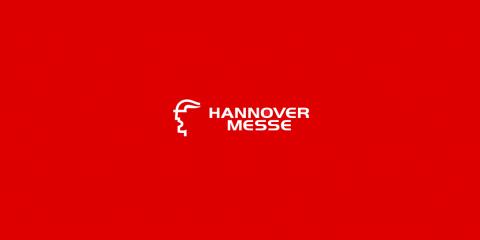Hannover Messe 2023

Contact us if you are interested in free tickets!
Skill-based robot programming
Programming a kitting robot is a complex and challenging task. In this demo, we illustrate our newly developed skill-based robot programming framework. This framework makes automated kitting operations with minimum programming effort feasible. It is supported by a world model generated from a CAD model and a planner to provide an optimal sequence of robotic movements.
Using our framework, companies will save time as the robot programming could be done in mere seconds (assuming that the CAD-modelling of the world model and the hardware configurations are already available). In a traditional approach this could take hours to days depending on the complexity of the scenario.
Infraflex - Flexibility through reconfigurable work cells
Mass customisation is a growing trend. Adapting your production line to it can be quite challenging. Therefore, we have developed Infraflex. Infraflex is an open architecture of multiple reconfigurable workcells for flexible assembly. This allows for a flexible reconfiguration of the physical assembly infrastructure which facilitates the fast product change over. The goal is to achieve a one-piece flow (Cfr. moving products/parts efficiently by planning your workflow based on the product and its needs instead of the organization or available equipment.
With Infraflex, we can achieve a 50% faster change over depending on the availability of the resources.
Active vision for defect detection
Due to the high variance and quantity of products, mass customisation makes automatic quality inspection challenging. Customers ask for an increasing quality, often meaning that human quality control is not sufficient anymore. To meet these demands, robot can be used. However, these robots need programming, resulting in a need for robot experts.
Therefore, we have developed an automatic path planning based on the CAD-file of the produced part, and (pre-trained) defect parameters. An auto annotation tool lets you annotate on one image and automatically annotating the other images. Implementing our path planning results in:
- 50% quicker decisions for inspecting complex parts and up to 100% correct detection for low-contrast defects.
- More than 50% reduction of configuration time of automated inspection using viewpoint optimization.
Adaptive ergonomics Work Instructions
Heavy and repetitive assembly tasks can lead to injuries for the operators. Using the right ergonomic way of working could prevent this. Therefore, we need operator support systems which provide operators with correct information and instructions to work in an ergonomic way.
In this demo, you will find a newly developed Digital Work Instruction (DWI) which monitors the operator’s ergonomics in real-time and provides the operator with the required ergonomics information. In addition, the system is capable to adapt the content of the work instructions to the detected potential risks. Using this DWI, you will achieve an overall reduction of your average Rapid Entire Body Assessment (REBA) score for a manual assembly.
From data and implicit knowledge to actionable insights in the production process using knowledge graphs
Manufacturing companies capture enormous amounts of data but are often struggling to easily create added value out of these data. This is because:
- The data is stored in different locations;
- The data is stored in different ways that require technical understanding that exceeds the problem domain knowledge and;
- The knowledge that is necessary to turn this enormous amount of data into actionable insights is spread over different roles in the organization (manufacturing engineers, data scientists, operators, ...).
A knowledge-graph-based digital twin cannot only help data scientists in retrieving data stored in different ways and locations, but also by explicitly modelling production knowledge. As such, the knowledge graph supports fast and agile creation of AI-models for root cause analysis, prediction, and optimizing production parameters.
Therefore, we developed data models and supporting methodologies that allow the creation of knowledge graphs that include intuitive (tacit) production knowledge on top of providing easy access to heterogeneous data.
By using the production knowledge that is stored in the graph to explore the enormous data haystack, we can now find actionable insights that were previously undiscovered.
Effortless indoor localisation
In this demo we use Ultra-Wide Band localisation to automate localisation and tracking of assets and people in the industry. This easy-to-install localisation technology is ideal when you have a temporal localisation need, for instance when taking inventory, maintenance on machines, harvesting, etc. Not only does the system has an accuracy of +/- 10 cm, but it also has a very short installation time. In a matter of minutes, you can set up this self-calibrating system by placing 3 to 4 fixed reference points (anchors) in the area. All people or assets that you want to localise and track must wear a small, portable device. On a screen you can track the position of every device, allowing a quick overview of all assets/people. Furthermore, upon moving the anchors, the system automatically updates, allowing you to cover any additional area without any set-up time.
In summary, our UWB localisation technology reduces set-up time with 90%-100%, is self-calibrating and updates automatically when the anchors are moved.